Thanks to his tiny country’s vast oil and gas reserves, the Sultan of Brunei is one of the richest men in the world, with a reputation for extravagance and a fondness for polo ponies and supercars. When he’s at home in Bandar Seri Begawan (BSB), Sultan Hassanal Bolkiah lives in Istana Nurul Iman (Palace of the Light of Faith), a 1788 room dwelling that is officially the largest residence of a current head of state in the world and is normally closed to the public.
While most of the time the closest everyday folk can get to Istana Nurul Iman is to snatch a glimpse of the vast exterior from a water taxi, for three days a year the sultan throws open his doors to celebrate the Muslim festival of Hari Raya Aidilfitri. A banquet is laid on, after which the male guests can meet and shake hands with the sultan, while women can meet his wife, Queen Saleha. Imagine the Queen of England were to host a free-for-all Boxing Day buffet at Buckingham Palace, greet every guest personally and give them each a Christmas gift to take home, and you’ll begin to get a sense of the occasion. Everyone is welcome at the sultan’s palace and no invitation is required; simply turn up and join the queue.
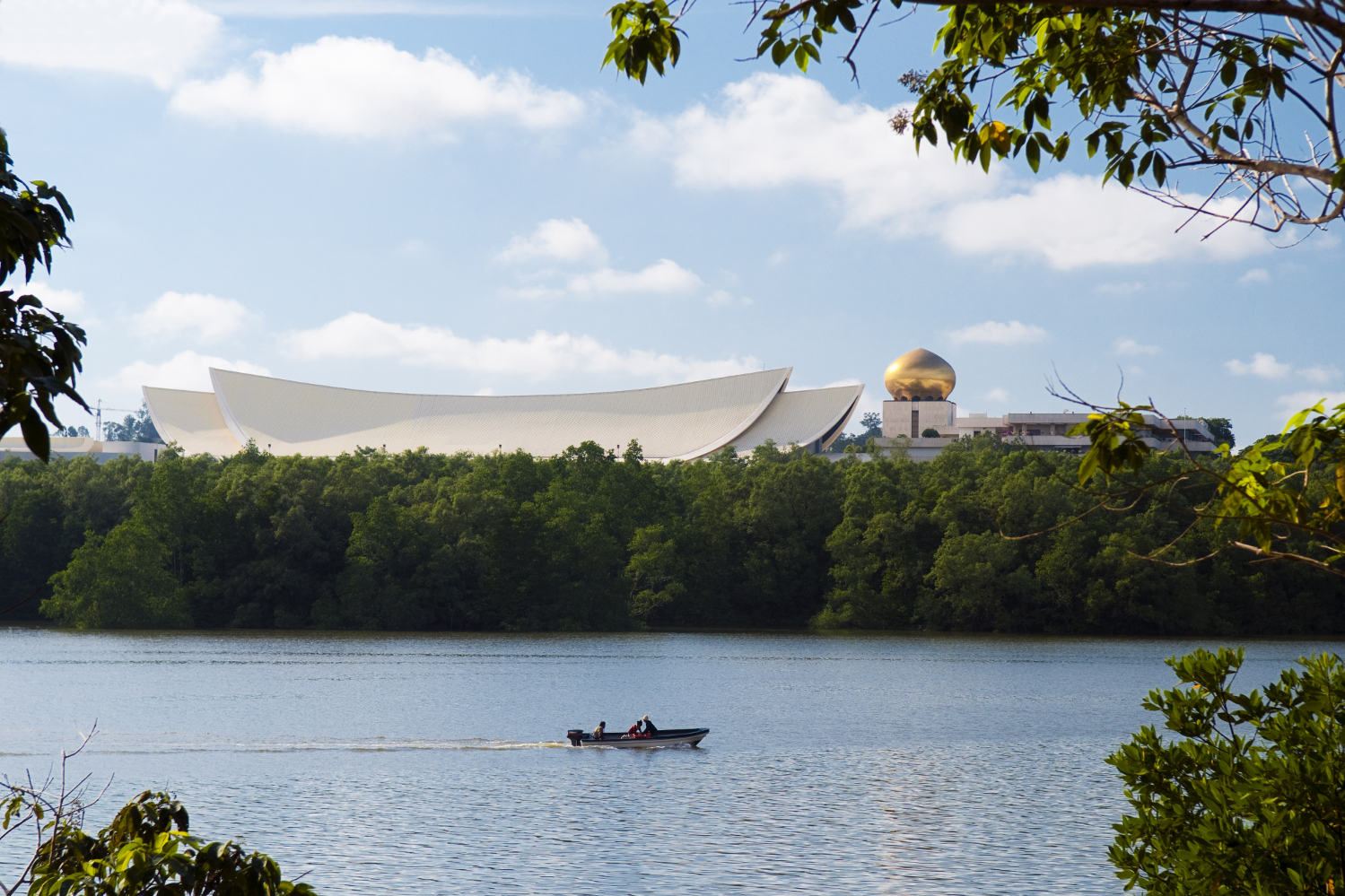
Bruneians are generally extremely friendly and welcoming to visitors, but if you do plan to go to the palace there are a few things to bear in mind. Brunei is a conservative country in which the sultan holds absolute power and is revered by his subjects; insulting him in public would cause great offense. When the tiny sultanate became fully independent in 1984, the sultan officially proclaimed Brunei’s ‘national philosophy’ to be Melayu Islam Beraja (Malay Islamic Monarchy), and in 2014 Brunei began the process of a staggered implementation of Islamic sharia laws. During Ramadan (the fasting month before Hari Raya) it is illegal to eat, drink or smoke in public in Brunei during daylight hours (even for non-Muslims), and office hours are usually shorter.
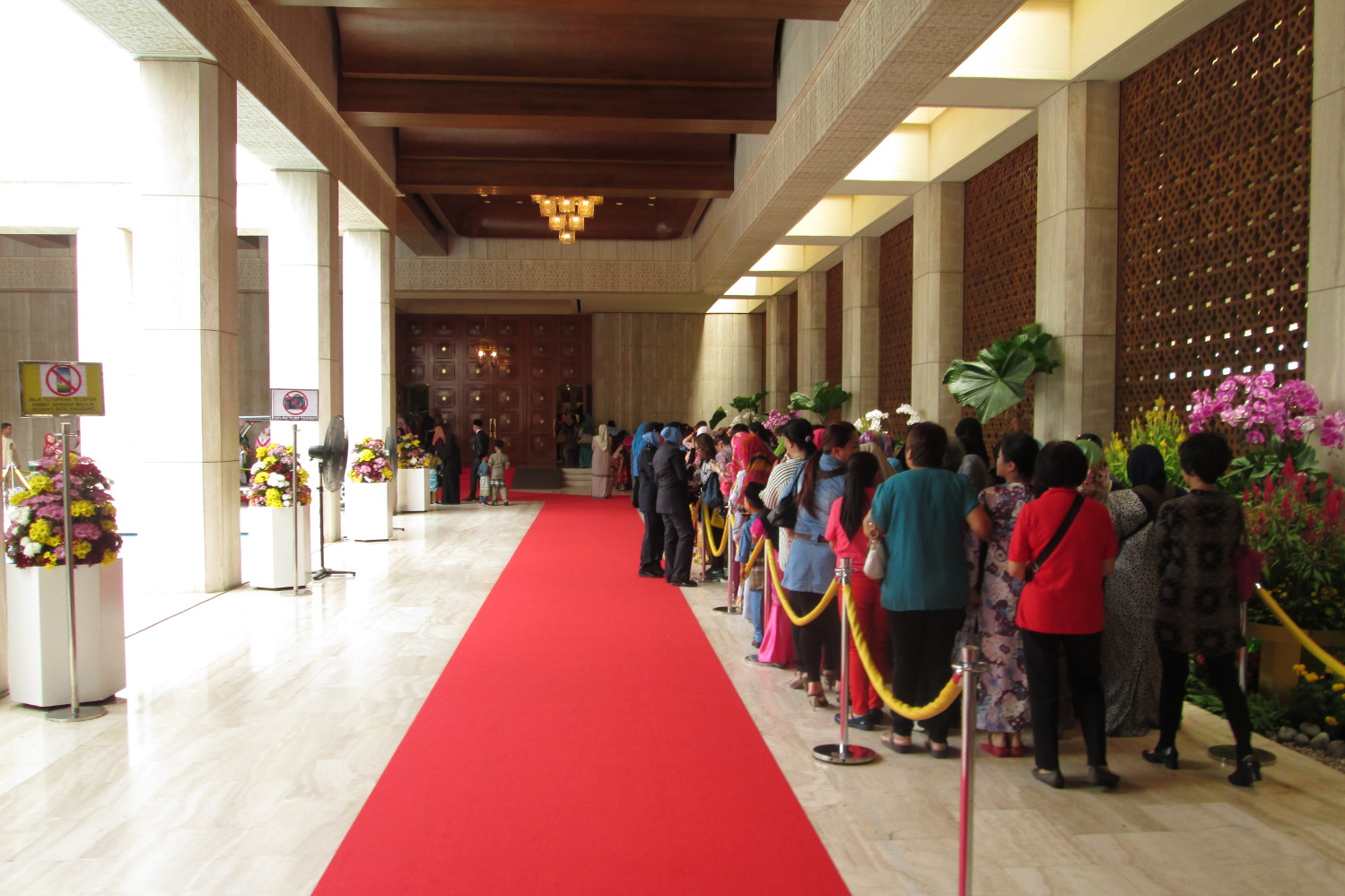
For their trip to the palace, Bruneians dress up in their smartest attire and many have clothes specially made in brightly coloured, luxurious fabrics: men generally wear traditional baju Melayu outfits – a collarless shirt, trousers, a sarong and a songkok hat – while most women wear baju kurung – floor length dresses with matching headscarves. Modest, loose clothes with long sleeves, closed toe shoes and long trousers for men and below the knee length clothes for women are appropriate here; if you are dressed too informally you may be turned away.
For the first three days of the Hari Raya holiday, Istana Nurul Iman is open for morning and afternoon sessions. Free buses are provided to shuttle guests the 3km from the city centre to the palace, where excited crowds gather from as early as 7am as the morning mist rises from the Bornean jungle that lies beyond the palace grounds. Up close, it is difficult to get a sense of the grandeur and scale of the palace that extends for 200,000 sq m behind the sweeping curved roof of the public entrance.
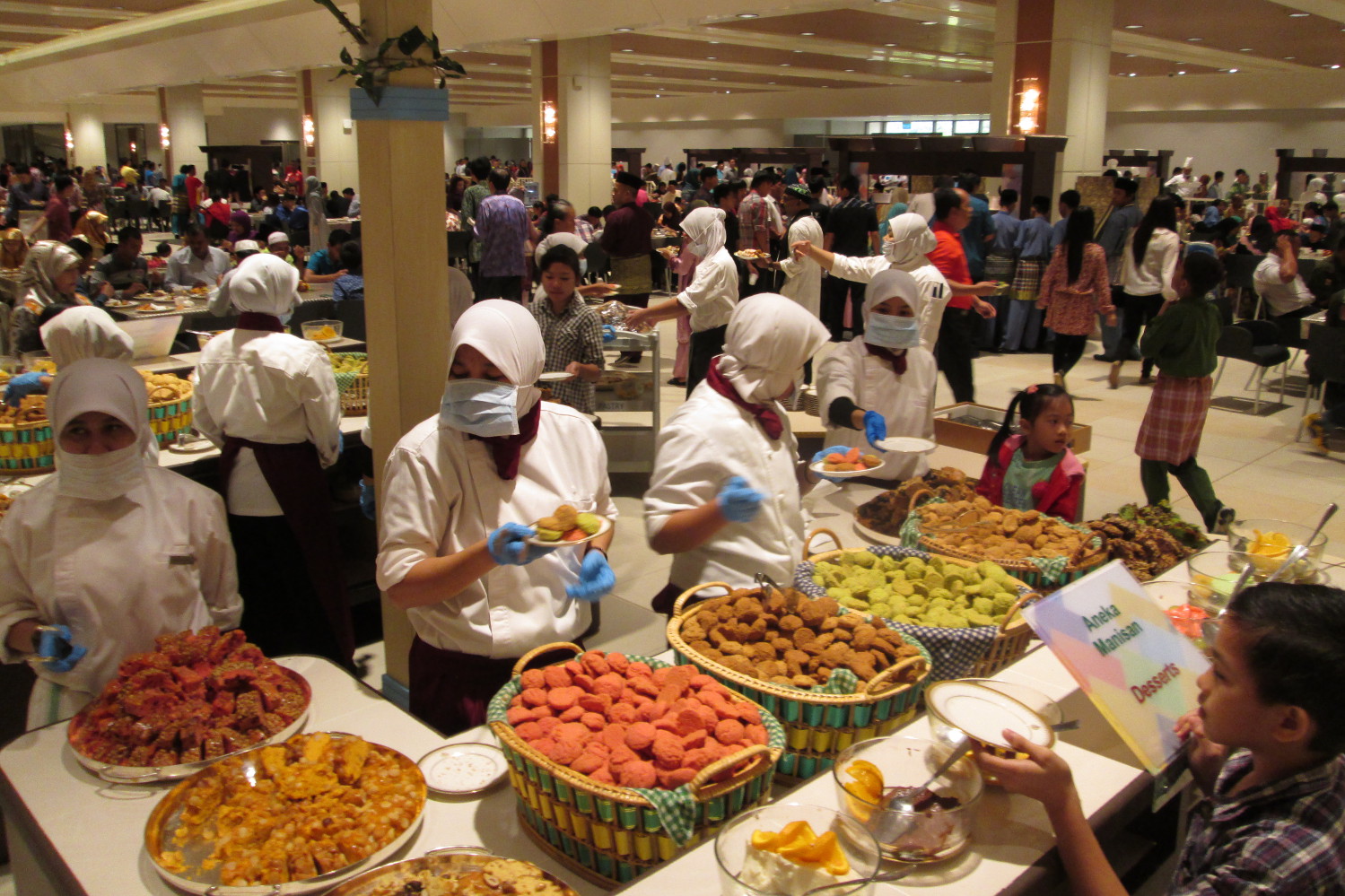
Despite the queuing involved – with a wait of up to an hour just to get through security – the atmosphere is upbeat and celebratory and the lines orderly, leading into a vast warehouse-like space for a buffet. What the modern dining hall lacks in royal opulence it more than makes up for with its culinary offerings: more than six types of curry as well as pasta and honey chicken are dished out at the buffet along one side of the hall, while in the centre of the room hundreds of families chow down at tables with gold lamé tablecloths and Hari Raya centrepieces. Seating is at shared tables, and there is a relaxed air as people mill around, visit the various drinks stations for teh tarik (sweet milky tea poured back and forth to create a froth), coffee and Milo chocolate malt drink (hugely popular in Brunei), and greet friends – in a country with a population of just over 400,000 there’s always a good chance of bumping into someone you know. But the highlight of the feast is without doubt the dessert stand, piled high with a variety of sticky fruit cakes, luridly coloured biscuits and fruit salads.
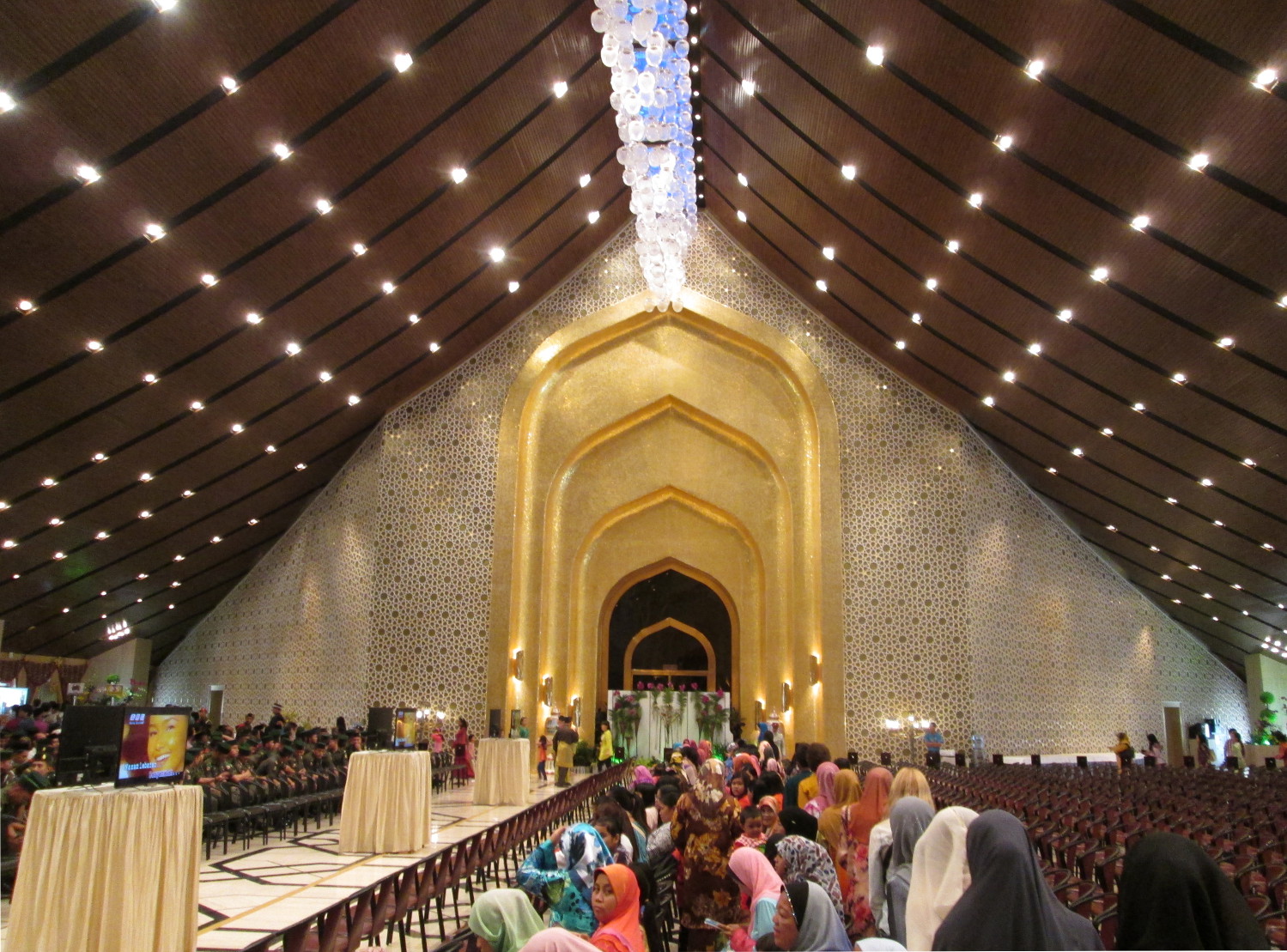
After the buffet, guests move into the central atrium of the hall beneath the high curved roof to wait for their audience with the sultan or queen. Chairs are laid out on either side of a central aisle, and at this point the crowd is segregated, with men sitting on the left and women on the right. Screens play Hari Raya pop videos – the Bruneian equivalent of cheesy Dean Martin Christmas duets – to while away the hour or so wait (a word of warning: these songs may be stuck in your head for weeks to come).
From here it’s through to another, much more elaborate chamber, with gleaming marble floors, bauble-like spherical lights packed into the rafters of a magnificent vaulted ceiling and a huge, three-tiered gold archway glittering in the light. This ornate hall is much more what you might expect the interior of the palace to look like, and the sense of anticipation is palpable as everyone remembers that they are waiting to meet the head of state. The line shuffles down some stairs and passes along an open-sided marble walkway lined with marble pillars and surrounded by lush plants – from here it’s possible to glimpse some of the palace’s golden domes.
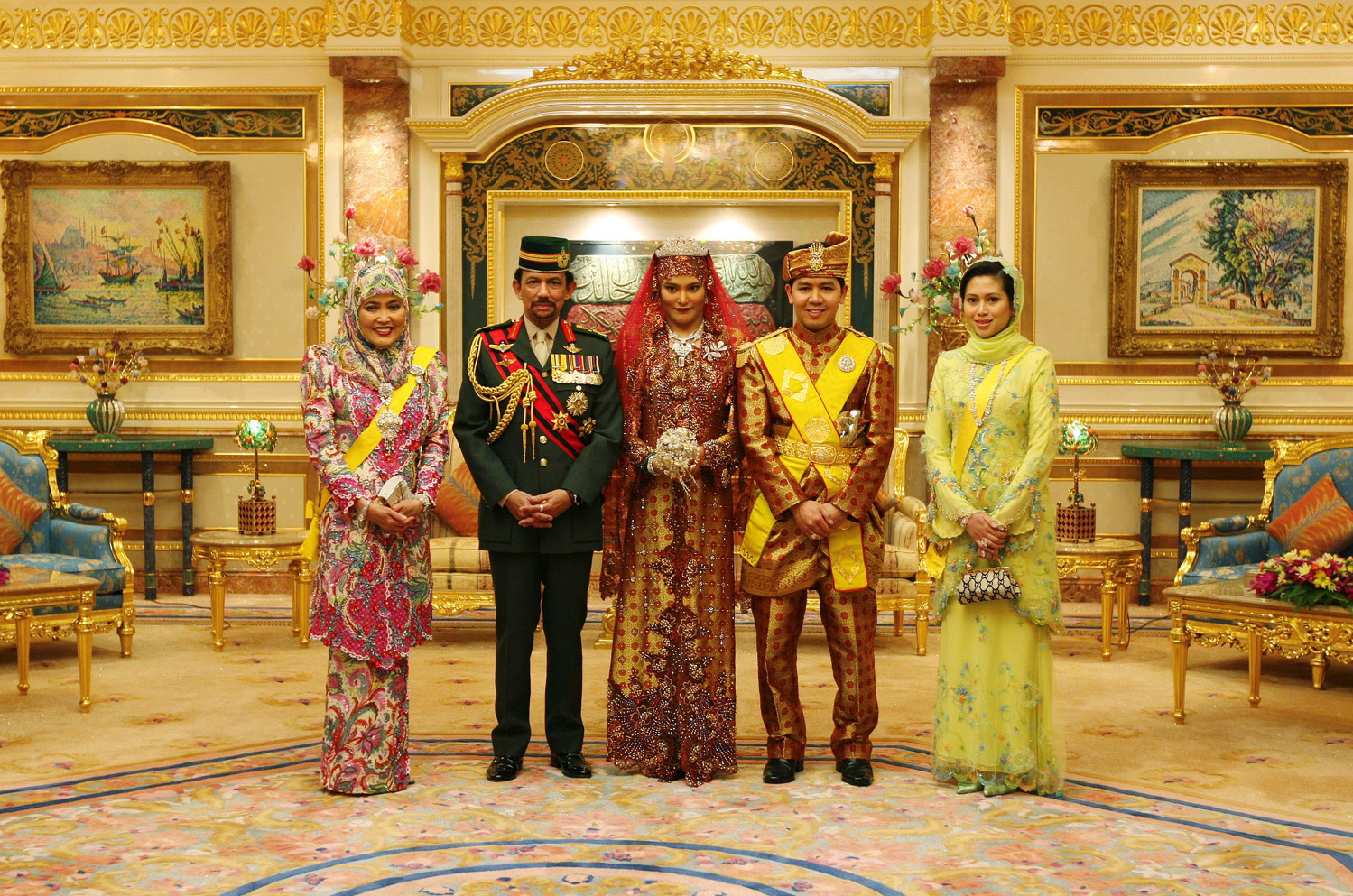
Female guests are instructed to put their handbags on their left arm (so as to free-up their right arm for handshaking) as they pass through a wooden door and onto the thick green carpet of a dark, windowless room, so full of flowers that the scent packs serious punch. A quick handshake and perhaps a few words from the sultan or queen and the moment is over in a flash – but at least you are given a gift to take home with you (think: fruitcake in a pretty box for adults; envelopes of money for children), a lasting reminder of your encounter with royalty. And if your meeting with the sultan or queen feels all too fleeting, bear in mind that they will greet some 40,000 people a day during the festivities.